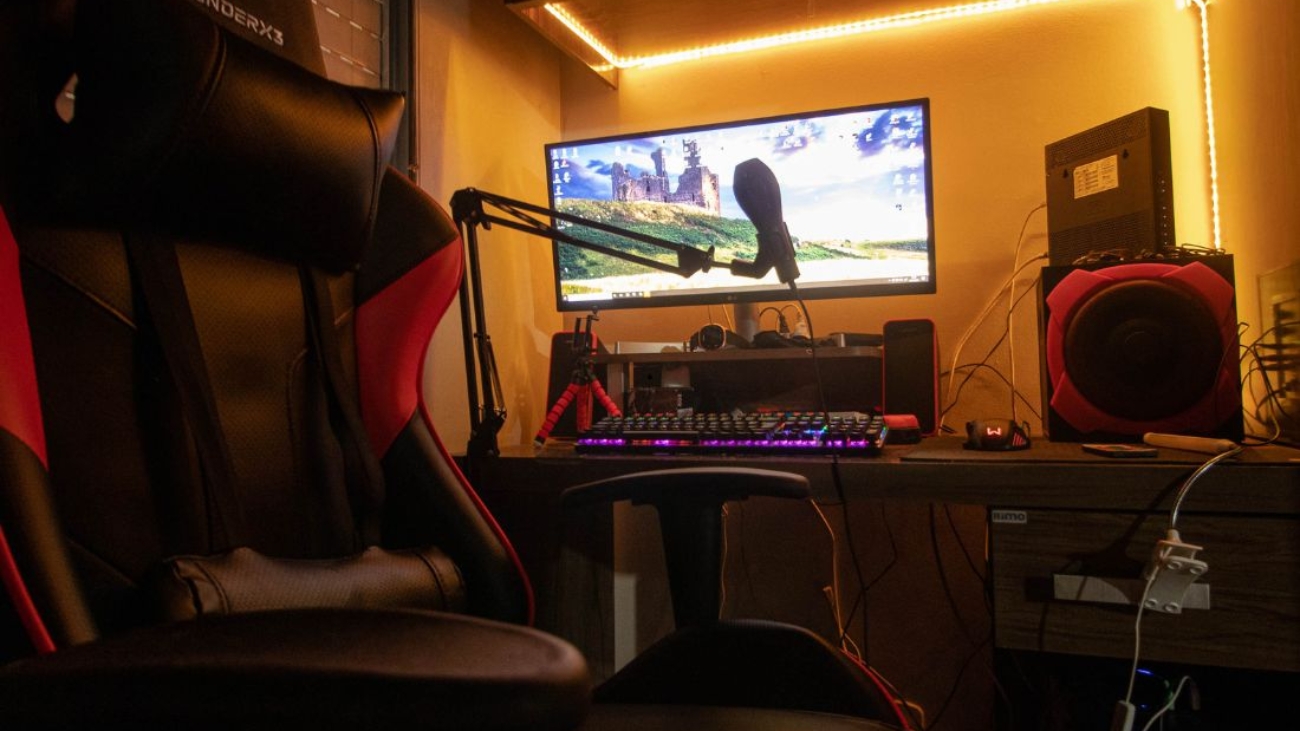A well-designed gaming station isn’t just about aesthetics; it’s about creating an immersive, comfortable, and efficient space to maximize your gaming experience. Whether you’re a casual player or a competitive esports enthusiast, the right setup can make all the difference. Here’s a step-by-step guide to building the ultimate gaming station.
1. Choose the Right Desk
Your gaming desk is the foundation of your setup. Look for a desk that offers:
- Ample Surface Space: Ensure enough room for your monitor(s), keyboard, mouse, and other accessories.
- Cable Management: Desks with built-in cable management solutions help maintain a clean and organized space.
- Sturdiness: A solid build is essential to support your equipment and ensure long-term durability.
2. Invest in a Comfortable Chair
A gaming chair isn’t just about style—it’s crucial for your health and comfort during long gaming sessions. Look for:
- Ergonomic Design: Lumbar support, adjustable armrests, and a reclining backrest are key.
- Material Quality: Opt for breathable fabric or premium leather to enhance comfort.
- Height and Swivel Adjustability: Ensure the chair suits your desk height and allows for smooth movement.
3. Pick the Perfect Monitor
Your monitor is the window to your gaming world. Key factors to consider include:
- Size and Resolution: A 24- to 32-inch screen with 1080p or 4K resolution provides sharp visuals.
- Refresh Rate: Higher refresh rates (120Hz or 240Hz) ensure smoother gameplay.
- Response Time: Look for a response time of 1ms to minimize lag.
4. Optimize Your Peripherals
- Keyboard: Mechanical keyboards are ideal for gaming due to their responsiveness and durability.
- Mouse: Choose a gaming mouse with adjustable DPI settings for precision.
- Headset: A high-quality headset with a noise-canceling microphone ensures clear communication and immersive sound.
5. Lighting Matters
RGB lighting can add personality and ambiance to your gaming station. Use LED strips, RGB keyboards, and monitors with customizable lighting to create a dynamic atmosphere.
6. Organize Your Cables
A clutter-free station improves functionality and aesthetics. Use cable clips, sleeves, and ties to keep wires neat and out of sight. Many desks also come with built-in cable trays.
7. Ensure Proper Ventilation
Overheating can damage your gear and impact performance. Arrange your PC or console in a well-ventilated area, and consider adding cooling pads or extra fans if necessary.
8. Add Personal Touches
Make your gaming station uniquely yours with decorations like posters, action figures, or themed accessories. These small additions can make your setup feel more inviting.
9. Test and Adjust
Once your setup is complete, test everything. Adjust monitor angles, chair height, and peripheral placement for optimal ergonomics and performance.
10. Upgrade Over Time
Building the perfect gaming station doesn’t have to happen overnight. Start with the essentials and gradually upgrade components as your budget allows.
Conclusion
Setting up the ultimate gaming station is about finding the balance between functionality, comfort, and style. By investing in the right furniture, equipment, and accessories, you can create a space that enhances your gaming experience and reflects your personal taste. Game on!

 Cart is empty
Cart is empty 

